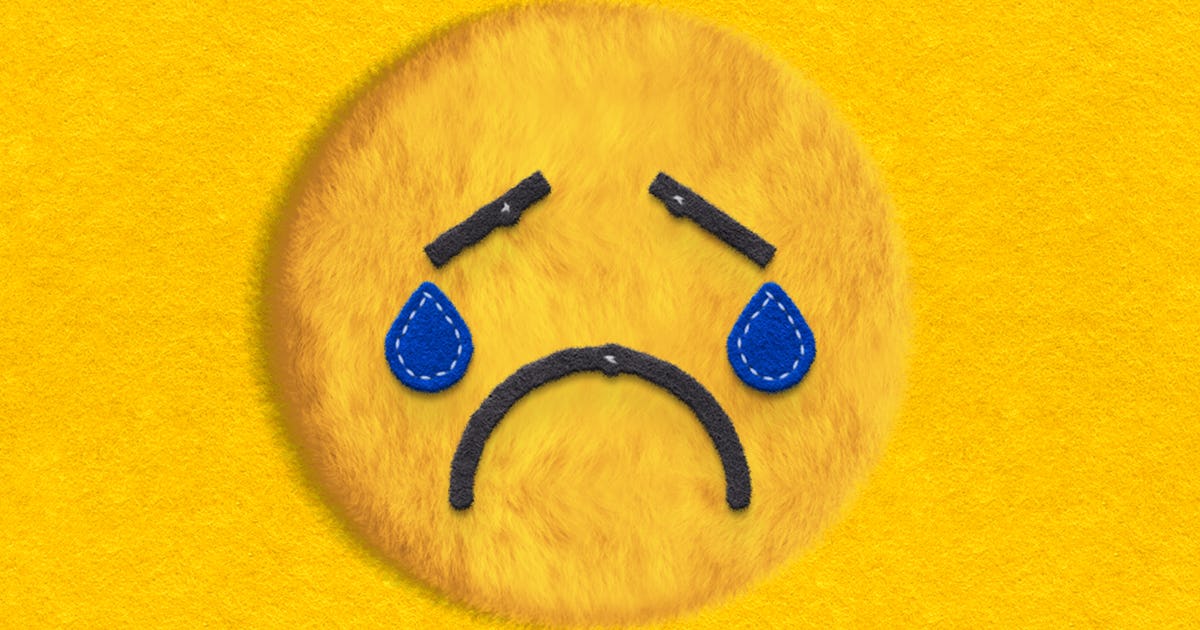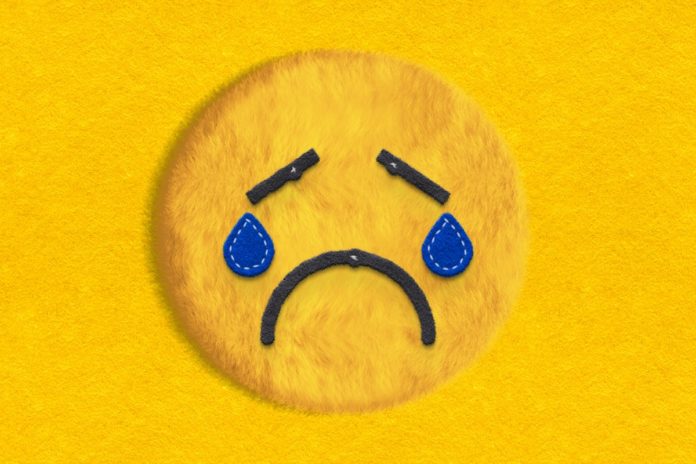
There was a time not too long ago when everyone online was sad. It’s true now as well, but it was different then. Sadness on the internet now is medicalized, untextured, and in treatment — depression, in other words. But back in the mid-teens, 2014 to maybe 2018, online sadness was in its raw, bleeding-heart heyday. It was an all-consuming, life-defining, abject sadness. Though it had an underdog’s spirit, it was a wildly popular thing to be. It got hundreds of thousands of followers; it had book deals. It was theorized, historicized, problematized, and commodified. Everyone who was anyone was sad online.
“Sadposting” (a term courtesy of the internet’s voracious aptitude for nomenclature) grew on Tumblr and then spread to Twitter, where it was, by nature of the medium, less concerned with aesthetic themes of frailty and violence, and more with a self-effacing quirkiness. No one on Twitter did it better than Melissa Broder, who ran the account @SoSadToday, churning out viral content in astonishing quantities to hundreds of thousands of followers. Her constant stream of tweets covered anxiety (“oops, totally didn’t mean to think my anxiety had stabilized“), misanthropy (“i don’t like: -others -myself”), loneliness (“we’re going to spend the rest of our lives together in my head”), self-sabotage (“being my own worst enemy is going ok”), longing (“i pretend you are better than you are so i have someone to long for because life is confusing and having one obsession helps me focus”), and self-loathing (“you have to learn to love yourself yeah sorry no”). She was prolific — those tweets are all from within a randomly selected three-day period in February 2016.
I knew about this kind of sadposting intimately, because (stepping into the spotlight) I lived it. From around 2014 to 2018, I too posted incessantly about being sad on Twitter. “I’m sad,” like its cousin “I’m gay,” was an endlessly generative sentiment: “feeling sad IS THIS RELATEABLE CAN ANYONE RELATE TO THIS????? CAN PEOPLE CONNECT ?????” I tweeted. Here’s another riff on the same theme: “wait……. im feeling sad but nothing specifically is wrong???? has this happened to anyone before???? not really sure what to make of this.” I posted some version of this tweet, conservative estimate, hundreds of thousands of times.
I never posted directly about the source of my sadness because it was usually too embarrassing and pathetic — mostly some unrequited attraction to a platonic friend (kill me) or, during a dark two-month period in late 2015, genuine regret and despair at choosing the wrong study abroad program (kill me again but more). Still, despite being opaque about why I was sad, I did sketch out the experience in fine detail. “can i sit down and cry in the back of this CVS. @cvspharmacy is that ok,” I wrote, a sentence with just enough specific detail to pass as a joke.
The appeal of the exercise was obvious. Being sad online was far easier than being sad in the “real” world, where talking about your endless well of despair would at best yield half-hearted, empty reassurance from Iris at Your Job. Online, you could let your sadness marinate until it was pithy, shareable, and appreciable. Tweeting through the sadness made you feel better — though it’s hard to know how much of it was the sharing and how much was the likes, a reward powerful enough to cut through even the strongest anhedonia. It was a delicate act. Miscalibrate, and the results were mortifying: you would come back to Twitter after ten minutes to find that your tweet was actually much sadder and less funny than you had originally realized — liked by no one, or, worse, only by your three most dedicated followers. I’ve deleted thousands of tweets in this genre, yet some have slipped through the cracks: “what’s like up tonight and also this weekend. how do i have fun and not be sad??? if that makes sense,” I posted in 2017. Heartbreaking.
At its best, though, sadposting online could be alchemical: you took your sadness and transformed it into something that felt useful and real, laundering the impotence of negative emotions into some kind of social statement — or at least something that was (to use the terminology of the time) relatable AF. If you consistently did it well — and I’m not trying to be a bitch, but I sometimes did it very well — you could accrue a modest online following of mostly other sad young people, which felt like something to be proud of. Here’s a viral one I stand by:
If you think it’s stupid don’t tell me.
If you were a member of the online sad community, it was easy to convince yourself that posting your sadness was therapeutic — emotions were a mass inside of you that you could expel by putting them in words, never mind that that mass seemed to be inexhaustible. What’s more, it felt important. These posts often positioned themselves against an imaginary, well-adjusted majority (“watching people be normal and i just don’t understand,” @SoSadToday wrote). Never mind that statements like this were consistently collected and repackaged by mainstream sites like BuzzFeed. Revealing to the public the depth of your chronic sadness seemed like real cultural work. We were ending the stigma against depression! It was confrontational. We’re all supposed to be sooooo happy – well guess what? We’re NOT!
The political potential of online sadness was most notably articulated by artist and writer Audrey Wollen, who was both a theorist of the form and an avatar thereof, posting crying selfies and giving interviews to websites where she vaunted the revolutionary potential of women’s sadness as part of her “Sad Girl Theory,” which “proposes that the internalized suffering women experience should be categorised as an act of protest.” If girlboss culture demands that we (I’m not a girl but I am gay which is pretty similar) wake up at 5am to begin an arduous day of drinking smoothies and abusing workers up the supply chain, sad girls had the courage and foresight to not get out of bed at all. For me personally, this meant posting on Snapchat about how I was too sad to go to frat parties. #Resist.
It felt meaningful, until it didn’t. By the 4,000th tweet SHATTERING The Stigma Against Depression, you felt like depression was as destigmatized as it would ever be — and that perhaps it couldn’t be destigmatized that much through tweets to begin with. I started to wonder if my sadposting was doing more harm than good. Emotions are complicated (sorry if this is the first place you’re learning this), and I wondered if turning my sadness into a personal brand made me attached to it longer than I needed to be. In the height of my sadposting era, a friend of mine who read my Twitter told me: “I get it. Your whole thing is being sad and gay” — to which I felt pride! Was I purging myself of my sadness, or reinforcing it, giving it a vaunted place in my head?
Worse still: was I glamorizing sadness? It feels dangerous to say that a mental illness is contagious, so I won’t, but an affect certainly is. The platforms to which I posted my sadness caught on to this as well, and even started offering what I assume are flawless mental health resources in response to sad posts that raised alarms on their surveillance algorithms. The ethics of this aside, nothing feels more pathetic than Mark Zuckerberg offering you mental health care. Instagram asking, “Sweetie, are you okay?” was perhaps enough to make online sadness lose its edge.
In 2016 when many (white) people became aware things weren’t going amazing politically, self-involved online sadness started to seem even less meaningful. Sadness gave way to despair, which, if still politically futile, at least is an emotion that knows what’s going on. Posting your sadness had always been about asking for care, even (or preferably) if that care was in the form of likes, but to be so openly needy to strangers felt gauche when so much Other Stuff was Going On. (Why are you telling us this? See a therapist!) “Sadposting” turned into the more derisive “traumadumping,” an emotional burden on an unsuspecting audience. I started becoming embarrassed about my sadness — not the emotion itself, but my expectation that people would listen to it.
The culture changed, but so did I. I got the money to pay for a good therapist, started exercising and meditating, and did all the embarrassing things that completely humiliatingly can alleviate (though not eliminate) the great symptoms of depression. Ultimately, my personal sadposting era ended because I stopped feeling quite so sad.
Gawker writer Sarah Hagi recently told me she thought public declarations of sadness have partially been replaced by public declarations of hotness. This is normal: online trends slide in and out of popularity. Sadness online isn’t gone, of course: Melissa Broder is still posting under @SoSadToday, even after having parlayed her successful account into a book of the same name, two novels, and a poetry collection. And elements of vintage online sadness can be found everywhere, from the Instagram poetry of Rupi Kaur to the music of Lana Del Rey. Public sadposting now is usually done at arms length, often tagged with a nod to political circumstances. “I want to die” becomes “I want to die and sea levels are rising.” Well, thank you for raising awareness.
Pure, myopic sadness posting — a puffy red-eyed crying selfie with a caption describing how you’re devastated because you fucking hate your fucking job — still exists online too. But it’s quieter, sequestered in the calmer corners of private accounts, Close Friends stories, and finstas, where audiences (mostly) know what they’re in for. My own sadness lives on in my finsta, mostly freed from the burden of being clever or funny. And yet sometimes even that feels like too much. (How does my mom keep finding my account? Why did I let so many acquaintances into it?) It is nice to have a public audience, but privacy is nice too. I’m content enough to cry on my own.
Charlie Bardey is a comedian and writer living in New York, if you can even believe it. You can follow him on Twitter at @ChunkBardey.








